We are in full planning mode for 2020
Happy New Year from all of us at Simple Gifts Farm! We are excited for the year to come!
January is time to make the plan for the coming growing season. As usual, every year is a chance to revisit our vegetable planting plans: how many beds of carrots should we plant, and when should the first tomatoes go in, and when should the second tomatoes go in, and when should the third tomatoes go in, and where? It’s still at least a month out from the vegetable soduku game where we try to fit it all onto the map of the farm. While we always enjoy the annual cropping plan process, we are also excited about some of our plans to continue to move the ball forward in our mission to grow great food for our neighbors and try to make our corner of this big round Earth a better place to be.
Increased capacity for winter production
We are at the end of a 4-year expansion of our ability to grow food through the winter. We have built 3 new greenhouses, and this year we are capping it off with the installation of a wood-chip-powered boiler. The boiler will allow us to heat our greenhouses with a renewable fuel, and it also gives us the capacity to heat just a little bit more. We’ve been keeping the greenhouses set to a night time temp of 34 degrees in years past; other growers’ experience is that going up to 40 can lead to a big jump in winter production. We hope to have that boiler up and running, maybe as soon as next week (nobody say anything about how it was supposed to be done in June,) and feel that we can justify turning up the thermostat a bit if we are using a cleaner, cheaper fuel.
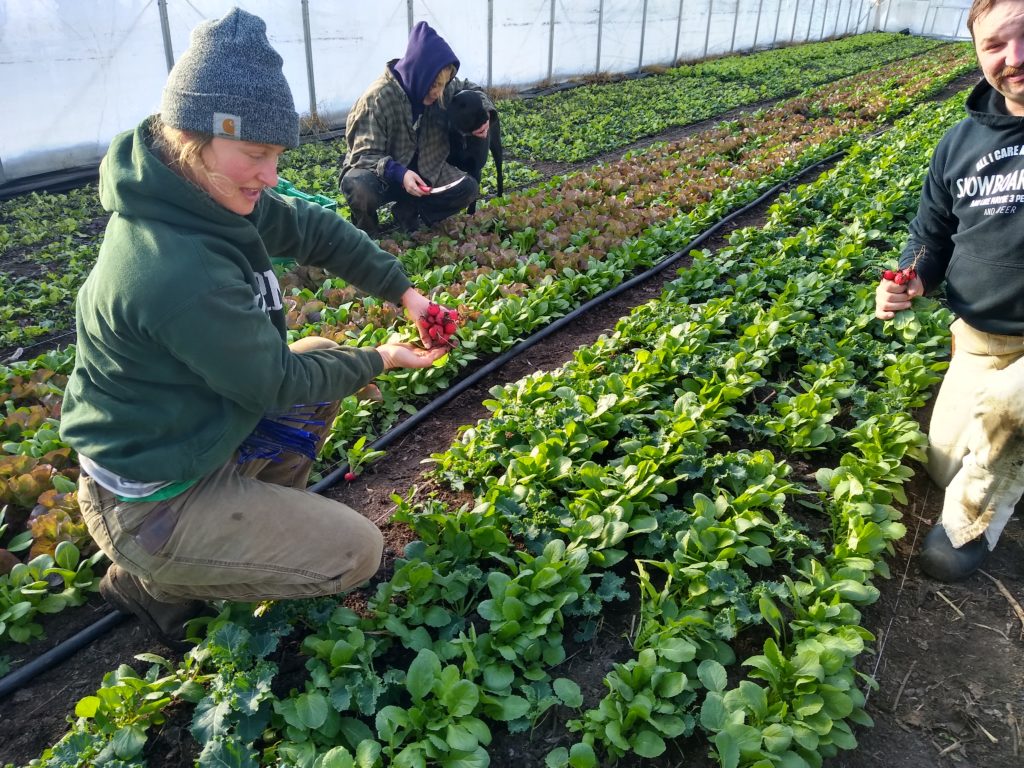
Further development of low-till/no-till systems to sequester carbon
The less you disturb the soil, the better for soil health, and the better for the atmosphere. Tillage brings air into the soil, and that’s like opening the damper on the slow-burn woodstove of organic matter turning into atomospheric carbon. The oxidation of organic matter can provide nutrients to the crops, but research is showing that systems which minimize soil disturbance can develop into a biological powerhouses that make nutrients available to crops by more sustainable means. Many of the growers who use reduced-tillage systems fall into two categories: on the one hand are larger growers who use heavy and expensive equipment to plant into the rougher field conditions, and often use herbicides to kill weeds. On the other hand are some very small-scale growers who use a lot of handwork on their farms, and have developed some very labor-intensive techniques. We are trying to find a middle scale that works for us and made some progress in developing systems in 2019. We liked what we saw for weed control potential of occultation with tarps, and will be working to use that technique more to our advantage in 2020.
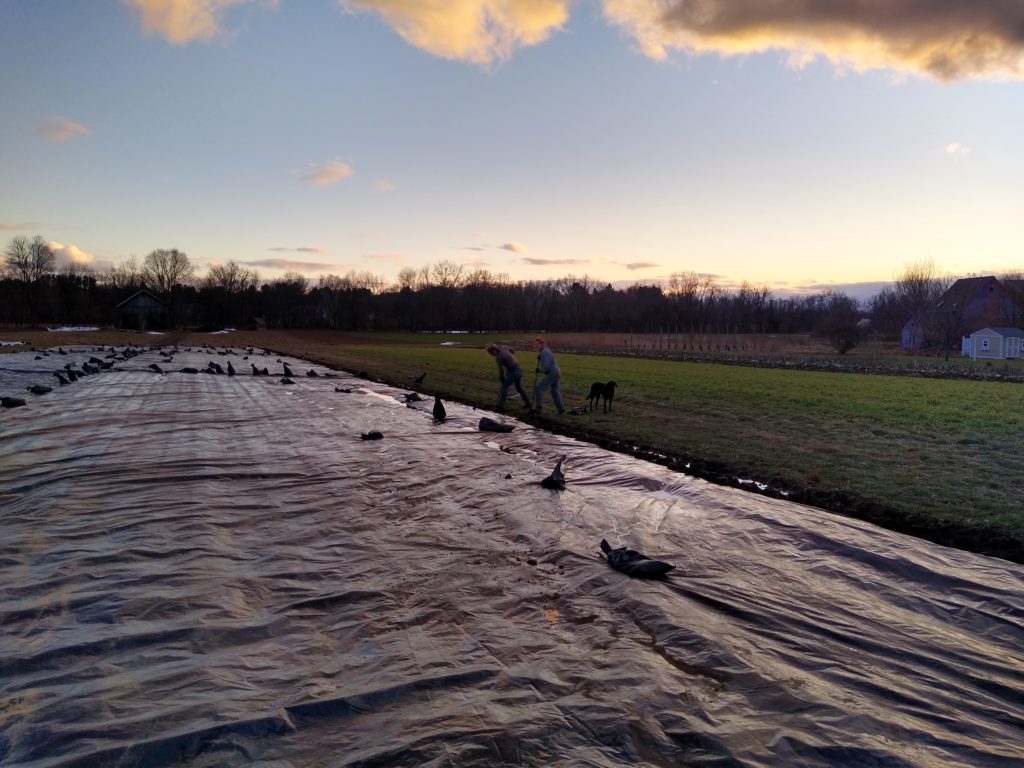
Planting fruiting trees and shrubs (also to sequester carbon)
One of our long-range planning efforts has been to establish some wider roadways throughout the farm. We intend to plant fruiting trees or shrubs into those strips to sequester carbon, establish beneficial habitat corridors, and add some additional crops that don’t depend on annual tillage for planting. This year may be the year that we get some of those plants in the ground. We may be looking to you all to contribute to the effort as a way of offsetting your own personal carbon footprint; stay tuned for more details
Turning more of our produce into delicious food for your table
We don’t have it all worked out, but we are hoping to spend at least one day a week in the kitchen over at the Hadley United Methodist Church cooking up some yummy stuff for you to take home. Ramen bone broth? Fresh salsa? Pickled everything? Farm fresh chili? Yes, yes, yes, yes, and yes! And if it all works out, it will help us with our business planning for when we build a kitchen in the farm store.
To hemp or not to hemp?
We have certainly had a lot of fun growing hemp this year; it’s a beautiful crop, it grows like crazy, and it smells delicious! On the other hand, we have barely sold any of it yet. We are working on our marketing, have some enticing possiblities, and we will just have to see how things turn out before we decide how much hemp to grow next year. I don’t think the answer will be none, but we’ll just have to see.
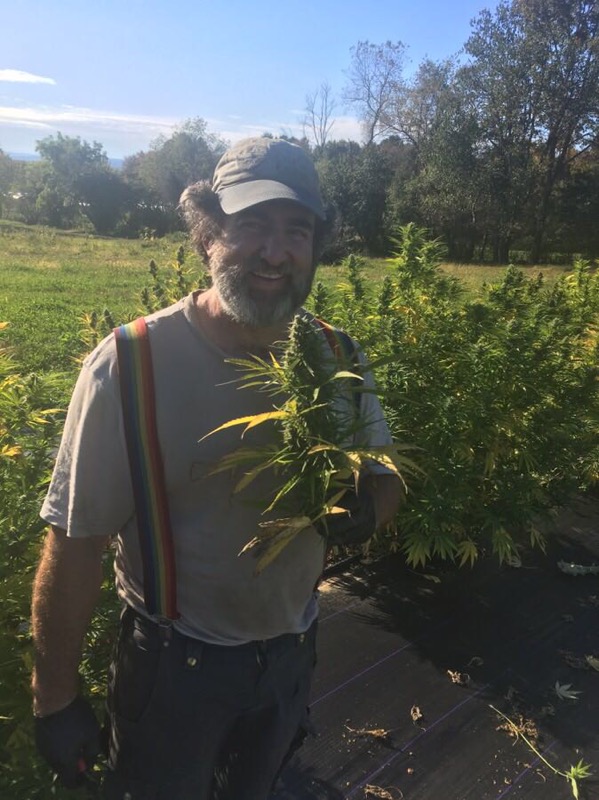
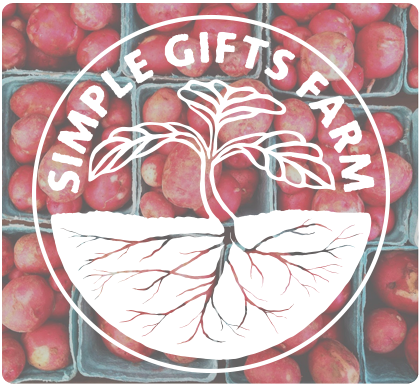
Thanks for publishing this blog about your future plans. It’s important for a community farm to share such info and it’s really interesting to hear about the various questions you face and the changes on the horizon. I admire how you guys are always trying to improve on productivity but keeping mindful of ecological and energy concerns. Love the idea of adding fruit trees and shrubs! Increasing long-term/perennial harvest. Blueberries come to mind first–as quick into production, not-shading out other crops, study compact plants, delicious/nutritious, etc. etc. but many other possible fruits would be great too! Also, love those winter greens–thanks for investing in the heated green houses!
Thanks for all of your support, Ted!